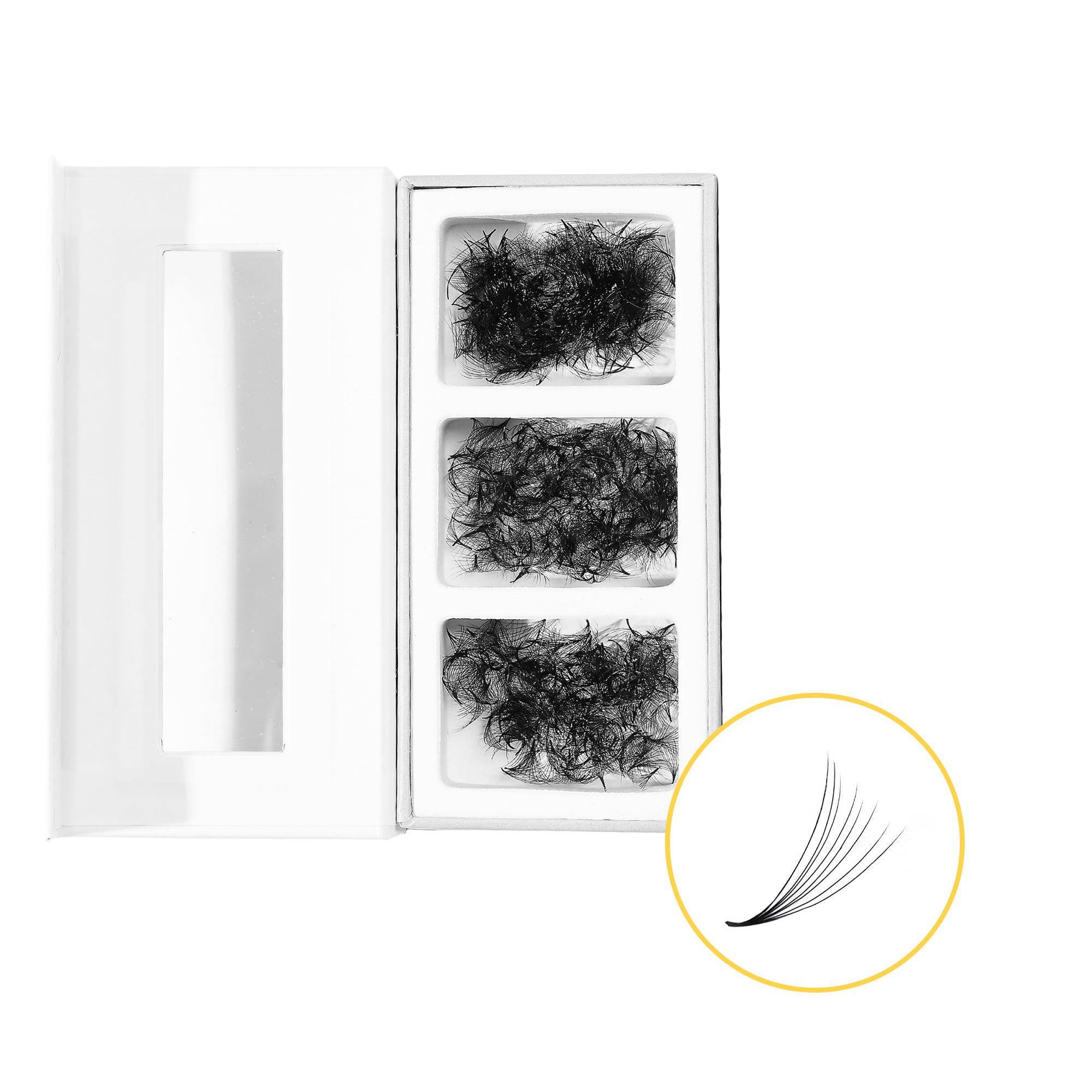Your eyelashes play a crucial role in framing your eyes and enhancing your overall beauty. If you’ve experienced eyelash loss and are wondering about regrowth, you’re in the right place.
In this comprehensive guide, we’ll delve into all aspects of eyelash regrowth, from understanding the natural growth cycle to practical tips and tricks for encouraging those lush lashes to make a comeback.
First, Understanding the Eyelash Growth Cycle
Understanding the eyelash growth cycle is like peeling back the layers of a beautiful mystery surrounding your eyes. Imagine it in three stages: Anagen, Catagen, and Telogen.
- The Anagen phase is the growth chapter, where new lashes sprout and determine your lash length over 4 to 10 weeks.
- Next comes Catagen, a brief 2 to 3 weeks of transition, marking the time when growth pauses, and follicles begin to shrink.
- Finally, Telogen, the resting or shedding phase, unfolds over 3 to 4 months.
Here, matured follicles patiently await their cue to gracefully fall out, making room for the new lashes to take center stage.
Picture it like a choreographed dance – Anagen starts the performance, Catagen takes a brief interlude, and Telogen gracefully exits the stage.
Now, you can answer the question, Do Eyelash grow back?
Absolutely!. Similar to the hair on your head, eyelash hairs naturally undergo a cycle of grow, falling out, and regrowth, typically taking about 4 to 16 weeks.
It’s important to note that as long as there’s no significant trauma or damage to the eyelid or hair follicles, your lashes should regrow.
However, exceptions exist, such as chemotherapy or certain medical conditions, which may result in lashes growing back with differences like being thinner or shorter.
Section 2: Causes of Eyelash Loss
Eyelash loss can occur for various reasons, and understanding these causes is crucial for maintaining lash health. Here are some common factors:
1. Alopecia
If you’re experiencing hair loss not only on your eyelashes but also on other parts of your body, you might be dealing with alopecia, an autoimmune disease known for causing hair loss.
Alopecia can appear as either chronic or acute. Acute cases, triggered by stressors like surgery, illness, or anemia, often see eyelash regrowth over time.
On the other hand, chronic or long-term alopecia may lead to permanent lash loss or slower regrowth.
2. Other Causes
- Irritation:
Allergies to cosmetics and beauty products can lead to eyelash loss. If a product causes irritation, stop using it immediately.
- Infections:
Infections can cause irritation and contribute to eyelash loss.
- Blepharitis:
A chronic condition involving inflammation of eyelash oil glands, leading to ongoing eyelash loss.
- Mental Health:
Conditions like Trichotillomania, where stress prompts eyelash removal. It is when you have the urge to pull out hair, including eyelashes.
- Thyroid Disorders:
Thyroid issues linked to general hair loss, including eyelashes.
- Skin Cancer
Rarely, eyelash loss can be a symptom of eyelid cancer.
- Medications
Some drugs, like to deal with chemotherapy, may cause hair and eyelash loss.
3. When to See a Doctor
- Eyelash loss on both lids.
- Accompanied by widespread hair loss.
- Occurring with skin changes.
- Vision loss, irritation, or discomfort around the eyes.
4. Additional Causes
- Skin Conditions
Psoriasis, seborrheic dermatitis, and atopic dermatitis may contribute to hair loss, including eyelashes.
- Trauma
Physical and mental trauma to the eye area damaging lash follicles and leading to lash loss.
Naturally, eyelashes will naturally grow back within a few weeks. However, if eyelash regrowth is a concern, various measures can be taken to promote healthy growth.
You may wonder, Until when do eyelashes continue to grow?
The process of eyelash regrowth is continuing throughout your life, with the growth cycle influenced by factors such as genetics, age, and hormonal changes.
However, as you age, you may observe changes in your lashes. They might become thinner and shorter, influenced by both the initial quantity of lashes and the length of the growth cycle.
Additionally, aging can lead to less curly lashes, as the hair follicles may weaken over time, causing lashes to lose their natural curl. Many individuals address these changes by using tools like eyelash curlers and opting for eyelash extensions. Furthermore, hormonal fluctuations during pregnancy or menopause can also impact the condition and growth of eyelashes.
Section 3: Tips for Encouraging Eyelash Regrowth
Now that you understand the growth cycle and potential causes, let’s explore practical tips to encourage regrowth:
- Maintain a Healthy Diet: Incorporate foods rich in protein, biotin, vitamins A and C, niacin, and iron to support overall health and eyelash production.
- Consider Multivitamins: Ensure you’re getting essential nutrients by supplementing your diet with a high-quality multivitamin.
- Use Over-the-Counter Treatments: Explore eyelash growth serums and conditioning gels containing beneficial ingredients. Be cautious with unregulated products and consult with professionals.
- Latisse: Talk to your doctor about Latisse, an FDA-approved treatment that enhances eyelash growth by increasing the number of hair follicles.
Additionally
Quit smoking for better eyelash regrowth! Smoking is known to be harmful to your health, and it also hinders hair growth, including eyelashes. Stub out those cigarettes to boost your lashes’ chances of growing back quickly and looking their best.
Section 4: Prevention for Future Eyelash Loss
1.Hygiene is Key
Ensure good hygiene practices for your natural lashes. Remove all eye makeup before bedtime to prevent clogged pores and potential infections. Gently cleanse your lashes every few days using a mild lash cleanser to eliminate dirt, oil, or makeup residue.
2. Handle with Care
Avoid frequent rubbing or touching of the eye area to protect delicate lash follicles. If necessary, ensure your hands are thoroughly washed before any contact. Exfoliate your lashes occasionally using a lash brush or spoolie to promote eyelash regrowth by removing dead skin cells.
3. Mind Your Products
Be cautious with the use of chemicals near your eyes. Opting for minimalistic products and avoid harsh substances like waterproof mascara, which can damage lash follicles. Less is more when it comes to maintaining lash health.
4. Mascara Matters
Choose mascara wisely, especially if you’re prone to allergies or excessive loss. Consider switching to a non-waterproof formula and remove makeup gently to prevent unnecessary tugging on your lashes.
5. Say No to Eyelash Curlers
Steer clear of eyelash curlers, especially when used in conjunction with mascara. These devices can lead to lash breakage, so consider minimizing their use or ditching them altogether to protect your lashes from potential damage.
Conclusion
Eyelash regrowth is a natural process that can be supported with the right care and lifestyle choices. By understanding the growth cycle, identifying potential causes, and adopting healthy habits, you can encourage the return of your beautiful lashes.
If you have concerns or experience unusual symptoms, consult with a healthcare professional for personalized advice. Embrace the journey to lush lashes and frame your eyes with confidence!










